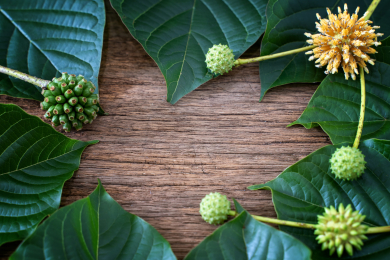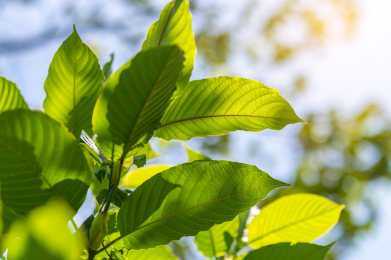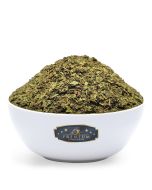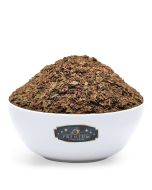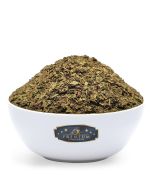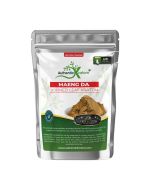- Buy any two kratom products, get 3rd one FREE
- There's No Minimum for Free Standard Shipping at Authentic Kratom
- Same Day Shipping. Order before 2:00 PM Pacific Time (M-F)
- Free Priority Mail Shipping on Orders $75 or more
- FREE 2 Day Shipping on orders $200 or more
- Buy Fresh & Potent Kratom Tea
How To Make Loose Leaf Tea | Best Way To Brew Loose Leaf Tea
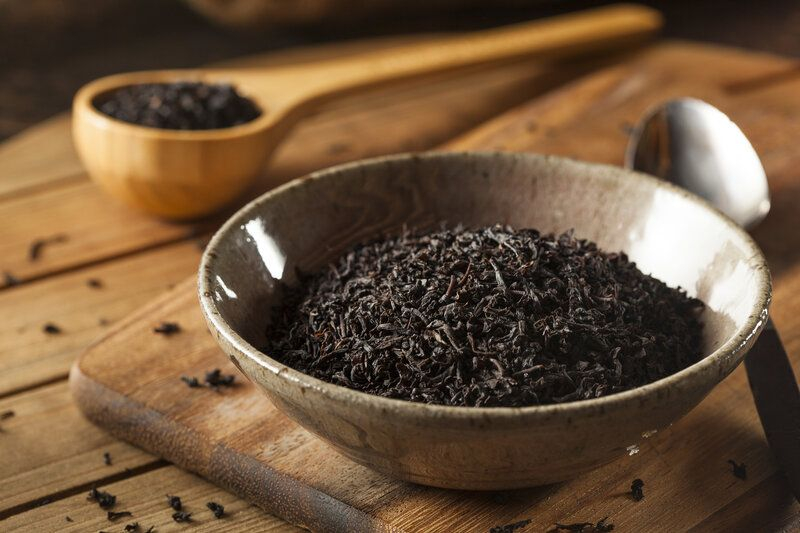
Why trust Authentic Kratom
- 10 years of experience in the kratom industry
- High expertise confirmed by a partnership with the American Kratom Association
- Only lab-tested and GMP-qualified products
- Reviewed and Trusted by thousands of customers
Feeling tired? Fetch a cup of tea. Are you unwell? Have tea with honey. Bored? Tea! Let try to make loose leaf tea?
Tea is the one beverage that most people can’t go a day without. No matter what the occasion may be, a cup of refreshing tea can take all your stress away and render your mind and body fresh alike. In fact, it won’t be an overstatement to say that a cup of tea is easily dearer to most people than their life.
Billions of tons of tea are consumed daily from morning to evening by millions around the globe who want to stay alert, healthy, and active. Tea constitutes an essential portion of the daily diet of millions. For having this age-old drink with its traditional flavor and aroma, tea bags and loose leaf tea are the talked-about options today. It is generally considered that loose leaf tea has a stronger flavor, better fragrance, and distinctive health rewards. Are these notions true? Well, you are about to find that out. We will explore the origin, benefits, types, and methods to make the ultimate drink from loose tea leaves.
Loose Leaf Tea - What Is It?
Loose Leaf Tea is the small whole broken tea leaves that are available for purchase in bottles or containers. 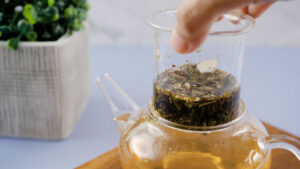
Since the tea leaves are not stuffed into bags, This tea is distinguished by its subtly intense aroma, better quality, and consistently effective health advantages.
How To Brew Loose Leaf Tea?
Quantity
Depending on the tea type or variation primarily, the quantity of loose tea required to make a strong drink needs to be first determined. The better steeping procedure steps and suggestions for measurements are ascribed on the packaging of the tea packs or containers. You can consult the manufacturer’s prescriptions preferably. It is generally recommended to add:
- ½ teaspoon of loose tea leaves in 8 ounces of hot water for making one cup of tea.
- 1 tablespoon of loose tea leaves in 8 ounces of hot water for Brewing. Then, add two cups more of hot water for 3 servings.
Procedures
Using The French Press
A French Press is relatively easier to use as compared to a teapot or coffee maker. How to make tea in a French Press?
- Pour the amount of water depending on your number of servings into the French Press.
- Next, add the measured amount of loose tea leaves depending on the number of servings, into the French Press.
- Using the lid, cover the French Press.
- Steep the tea for a suitable or prescribed time.
- Press the plunger of the French Press down slowly such that the tea leaves separate from the water completely.
Using An Infuser
The infusers are better alternatives to tea bags as teabags use fine-grade tea, which yields a weak taste and scent. Infusers are the ideal replacements for tea bags as they maintain the flavor and aroma of this tea effectively. Also, they are sustainable as they could be used for more than one time easily. The steps for making tea in an infuser using loose leaf tea leaves are:
- Pour boiling water into a medium-sized cup having a capacity of holding 8 ounces of liquid.
- In the infuser, place the quantity of loose leaf tea depending on the number of consumers.
- Put the infuser into the cup.
- Allow the tea to steep for the recommended period or until you become satisfied that tea flavors and aroma have become perfectly infused with water.
Using A Teapot
There are types of teapots that are meant for brewing loose tea leaves. These teapots make the best tea. They have already fitted infusers or tea-strainers, which may be removed immediately easily to prevent over-steeping of tea leaves. The recipe for making tea using loose tea leaves in a teapot is summarized in steps as:
- Bring the required amount of water to a boil in the teapot.
- Put the prescribed or recommended amount of loose tea leaves into the built-in strainer inside the teapot.
- After sufficient steeping time, remove the strainer from the teapot and serve the tea.
Types Of Loose Leaf Tea And Their Benefits
There are many types of loose leaf tea. Which one is the best? Or more precisely, Which one is the most suitable for you? The answer depends on the health benefits you want to profit from. Each type of loose leaf tea has health-related advantages. The six types of loose leaf tea are explained below with their positive implications on health.
White Tea
White tea is made from the Camellia Sinensis plant. This loose leaf tea is the least processed type of tea as it is exposed immediately to heat after its harvest to halt oxidation. Due to nearly no exposure to oxygen, this tea gets its moderately strong and elegant taste. Patients with heart-related problems should use this tea as it has properties helping lower blood pressure. White tea also aids in weight loss, cholesterol reduction, and strengthening brain health.
Black Tea
Black Tea is made by high oxidation of the Camellia Sinensis plant. This high exposure to oxygen gives this loose leaf tea it's iconic black color and distinct flavor. Black Tea is consumed in a diversity of blends all over the world. Two of them are Chai and Earl Grey. You can also make iced tea using black tea. Black tea has properties that aid in sound digestion and are beneficial for the heart and immune system.
Green Tea
Green Tea also comes from the Camellia Sinensis plant. This tea is also least exposed to oxygen, due to which it retains its inherent green color and marked flavor. Green tea has qualities that are beneficial for memory, teeth health, and digestion.
Herbal Tea
This tea does not contain the leaves of the plant from which white, black, and green teas are made. Herbal tea is a combination of spices and herbs. Nearly all herbal teas do not contain caffeine. A variety of flavors can be achieved in herbal teas by changing herbs and spices. This tea helps sleep and prevents inflammation.
Pu-Erh Tea
Pu-Erh tea has the most distinct flavor as it undergoes fermentation and oxidation for its making. This tea is also made using the leaves of the Camellia Sinensis plant and has an earthy taste. This tea has properties that help in relieving stress and speeding digestion.
Oolong Tea
This tea is made by moderate oxidation of the leaves of the tea plant. Oolong tea has various shapes, which results in a diversity of flavors. Oolong tea is helpful for people having diabetes and inflammation.
Kratom Tea
Kratom tea leaves are obtained from a botanical tree that is scientifically known as Mitragyna Speciosa. This tea is indigenous to the South-East Asian people as they have been consuming it for centuries.
This tea is famous for its stimulant and relieving benefits. Due to this reason, it is still consumed on a large scale. Start your day with Ketum loose leaf tea and make this drink using the following methods:
You could balance the quantity of Kratom loose tea leaves, water, and other ingredients according to the number of servings. Let’s get started with the two easiest methods:
Using A Pot
This method is as easy as it could be. Have guests over at your place? Fetch a pot and get going as this method is best for multiple servings.
- Start by gently boiling 1 litre of water (or in the case of a single serving, take a cup full of water) in a large pot (or a small saucepan for a single serving).
- Then, add one tablespoon of Mitragyna tea leaves (1 teaspoon if one cup of water) and simmer for 10 to 20 minutes.
- Strain the tea leaves using a strainer or a cheesecloth. For sweetening and enhancing the flavor of the tea, add honey, or jaggery, or another preferred sweetener.
Using A Teapot
Making the flavorful Kratom loose leaf tea using a teapot is also fairly uncomplicated. You just have to decide whether you want to have the tea alone or with your friends.
- Boil water in the teapot
- Add in the Speciosa tea leaves
- Steep the leaves in the water for a specified amount of time until the tea reaches your likable flavor and aroma
- Depending on your fondness for sourness, squeeze a lemon into your tea for enhancing its flavor. You can also add honey to kill the bitter taste of the herb and make your tea delicious to the taste.
- Lastly, pour the tea into a cup and enjoy the best potent tea you’ve ever had in your life!
What Are Loose Leaf Tea And Tea Bags In Terms Of Tea Grades?
There is a large number of tea grades that are available in the market but the four most popular classes of tea grades are:
- Dust grades
- Fanning grades
- Broken Leaf grades
- Whole Leaf grades
The loose leaf tea comes under the third broken leaf grade. This tea is the most flavorful, aromatic, and maintains healthy properties. The tea in tea bags or packets is dust grade and has the least health-related properties.
Loose Leaf Tea VS Tea Bags: Which One is Better?
We take few parameters to determine the better amongst the two choices of loose leaf tea and tea bags.
Taste And Aroma
The taste and aroma grow weaker when tea leaves are broken down into finer forms. The tea leaves in tea bags are fine grade. Thus, tea bags give less strong taste and flavor. The aroma is also compromised. Considering loose leaf tea, it infuses with water properly to form a drink with a strong fragrance, color, and taste.
Nutrition
It may be perceived that teabags give more nutritional value because the tea leaves are fine and water could flow through easily. But it is not true due to the following reasons:
The Material Of The Bag
Teabags are generally made with plastic to increase the strength and life of the bag and prevent tearing. So, plastic molecules are maybe being consumed with the tea. With loose leaf tea, you consume flavor and nutrition directly.
The Bag Itself
The bags can absorb important tea catechins. Thus, reducing the nutritional value of tea itself to substantial levels. Water flows through loose tea leaves without any barrier to the proper transfer of catechins into water.
Staleness
The tea packed in tea bags is relatively stale as compared to loose tea leaves because its fineness causes greater oxidation. Due to constant exposure to oxygen, the taste, flavor, and nutritional value of tea decreases. Considering loose leaf tea, it is stored and available in air-tight containers.
Shelf Life Of Loose Leaf Tea
Loose Leaf does not particularly ‘expire’ but it loses its properties, taste, and aroma over time. So, ‘best before’ would be the correct term to use to define the shelf life of loose leaf tea. The type of loose leaf tea and the storing method are also important factors that impact the usage time of loose leaf tea. For example, the loose leaf tea stored in glass or plastic containers lasts shorter than stored in specific tea containers.
The types of loose leaf tea have different shelf lives. White tea could last for two years if it is stored in an air-tight container such that it is least exposed to humidity. Surprisingly, the health benefits of white tea increase while its aroma and flavor grow feeble with its life. Black tea retains its properties for 3 years if it is stored in a compact form and protected from air. Green tea also has the same shelf life of 18 months if it is stored protected from the outer atmosphere. Oolong tea lasts for 12 months depending upon the storage. Lastly, Pu-erh tea has greater shelf life than any other tea.
Takeaway
Loose Leaf tea is a better way of consuming the traditional tea drink as it gives more nutrients in the form of minerals and vitamins. Loose Leaf tea infuses a better original taste and flavor into the water making the tea-time more enjoyable. There are types of tea and types of benefits. Choose the tea that suits your health and complements your preferences. You could prepare your tea in an infuser, a French Press, or a teapot. Loose Leaf tea presides over tea bags due to the danger of indirect plastic consumption, the barrier to better tea steeping, and subsequent weaker flavor. The shelf life of tea varies with its types.




